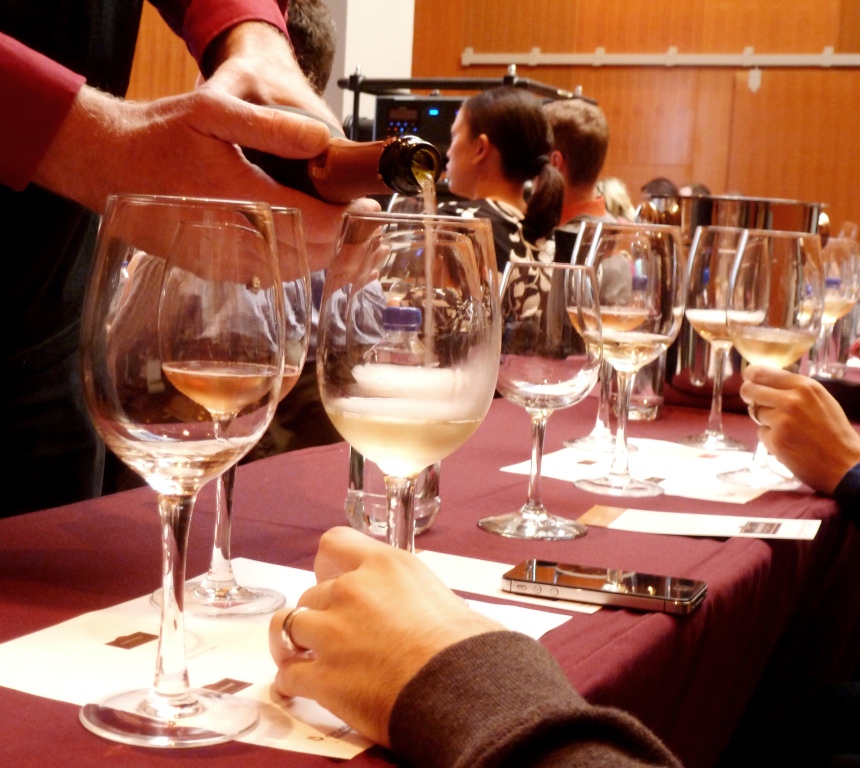French Breakfast
 When I arrived at Gourmet Chicago, I made a beeline for the Pritzker Pavilion’s Choral Room where Roederer Estate was hosting a sparking wine seminar. Here, no line of people clogged the door — I could just walk right in and take a seat behind four empty glasses filled with anticipation.
When I arrived at Gourmet Chicago, I made a beeline for the Pritzker Pavilion’s Choral Room where Roederer Estate was hosting a sparking wine seminar. Here, no line of people clogged the door — I could just walk right in and take a seat behind four empty glasses filled with anticipation.
I’ve had tasty California sparklers before, but I never thought they really compared with true Champagne. Our presenter, Xavier Barlier, agreed, noting that “because the climate of California is not so severe, the [sparkling] wines don’t achieve the finesse of Champagne.”
Well, the wines we sampled seemed pretty darn tasty to me. I was surprised to see them poured into white wine glasses instead of the more traditional flutes. Barlier liked the elegant look of flutes, but he called them “straight jackets,” arguing that the sparkling wine doesn’t have room to expand and express all of its aromas and flavors. “Better to use Chardonnay glasses,” he advised.
We started our “French breakfast” with the basic Roederer Brut, which retails for between $19 and $22. It tasted crisp, with fine, graceful bubbles and a subtle underpinning of yeast and wood. An excellent value, but I think it’s worth it to spend a couple of dollars more for the Brut Rosé. This orange-hued sparkler tasted surprisingly lively, even spicy, and featured the same elegant bubbles. It would surely work beautifully with a range of different foods.
Sparkling wines, incidentally, tend to be very food-friendly. If you find yourself agonizing over what to pair with a dish — and who doesn’t, from time to time? — it’s hard to go wrong with bubbly. Especially the pink stuff.
We also had the fortune to sample two vintage Roederers. Sparkling wine makers maintain the flavor profile of their non-vintage wines (like those described above) by blending wines from different vintages. The blending mitigates the variations that happen from year to year, ensuring a consistent standard of quality.
Only in the best years (theoretically) do they bottle vintage-dated sparkling wines, which frequently have more character than the non-vintage wines. The 2002 Roederer L’Ermitage certainly did not disappoint; it had exquisite bubbles and bright flavors as well as real soul. According to Barlier, this wine, priced at about $47, is made in the same manner as Cristal, a famous Roederer Champagne priced at about $200.
Finally, we arrived at the 2003 Roederer L’Ermitage Rosé, much paler in color than the non-vintage Brut Rosé. What a beautiful, romantic wine — really rich and luscious. It costs about $65, but for a special occasion, it’s worth the splurge.
This tasting proved, as if I needed any more evidence, that I’m not drinking nearly enough sparkling wine.





